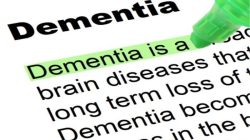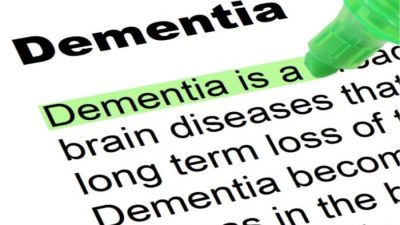Free legal advice car accident is a crucial resource for individuals navigating the complexities of car accidents. Often, victims find themselves overwhelmed with medical bills, insurance claims, and the legal aftermath of an accident. Understanding your rights and options is vital, and having access to free legal guidance can help clarify the often confusing legal landscape that follows such incidents.
Legal professionals can provide invaluable insights into the steps you should take, helping to ensure that you receive fair compensation for your injuries and losses. Whether it’s assessing liability, negotiating with insurance companies, or guiding you through the litigation process, free legal advice can make a significant difference in your recovery journey.

Effective communication is the cornerstone of a successful workplace. It encompasses a range of elements, from the clarity of the messages we convey to the manner in which we engage with our colleagues. In this article, we will delve into various aspects of effective communication, exploring its importance and offering practical tips to enhance your skills.

Understanding the Importance of Communication
Communication is not merely about speaking or writing; it’s a multi-faceted process that involves sharing information, thoughts, and feelings. In a professional setting, effective communication is crucial for:
- Collaboration: Teams that communicate well are more likely to collaborate effectively, leading to improved project outcomes.
- Conflict Resolution: Open lines of communication help in addressing and resolving conflicts before they escalate.
- Employee Engagement: When employees feel heard and understood, their engagement and morale improve.
- Clarity and Direction: Clear communication ensures everyone understands their roles and responsibilities, leading to better productivity.
Types of Communication in the Workplace
Understanding the different types of communication can help you choose the most effective method for your message:
- Verbal Communication: This includes face-to-face conversations, meetings, and phone calls. Tone and body language play critical roles here.
- Non-Verbal Communication: Body language, facial expressions, and gestures communicate messages beyond words.
- Written Communication: Emails, reports, and memos are vital for documenting processes and decisions. Clarity and conciseness are key.
- Visual Communication: Charts, graphs, and presentations can enhance understanding by providing visual context to information.
Barriers to Effective Communication
Despite its importance, communication can be hindered by various barriers:
- Language Differences: Misinterpretations can arise when team members speak different languages or use jargon unfamiliar to others.
- Cultural Differences: Different cultural backgrounds can lead to varied interpretations of messages and behaviors.
- Emotional Barriers: Stress, anxiety, and personal issues can impact how messages are received and interpreted.
- Technological Barriers: Reliance on technology can sometimes lead to miscommunication, especially if messages are ambiguous.
Strategies for Improving Communication
To enhance communication in the workplace, consider the following strategies:
1. Practice Active Listening
Active listening involves fully concentrating on the speaker, understanding their message, responding thoughtfully, and remembering the conversation. Techniques include:
- Maintaining eye contact to show engagement.
- Nodding and using verbal affirmations to encourage the speaker.
- Paraphrasing what the speaker has said to confirm understanding.
2. Be Clear and Concise
Avoid jargon and overly complex language when conveying your message. Stick to the main points and be direct. This ensures your audience grasps your message without confusion.
3. Utilize Appropriate Channels
Choosing the right communication channel is vital. For urgent matters, a phone call may be more effective than an email. For formal documentation, written communication is appropriate.
4. Encourage Feedback
Encouraging feedback promotes an open dialogue. Ask for input on your communications, and be open to constructive criticism, adjusting your approach as necessary.
5. Be Aware of Non-Verbal Signals
Pay attention to your body language and that of others. Non-verbal cues can significantly impact the message being conveyed, so ensure they align with your verbal communication.
6. Adapt to Your Audience
Tailor your communication style to your audience. Consider their background, knowledge level, and preferences to ensure your message resonates with them.
The Role of Technology in Communication
In today’s digital age, technology plays a significant role in workplace communication. Platforms such as email, instant messaging, and video conferencing have transformed how we connect. Here are some considerations:
- Choosing the Right Tools: Utilize tools that suit the nature of your communication. For instance, video calls are ideal for discussions requiring visual cues, while emails are better for formal communication.
- Maintaining Professionalism: Even in digital communication, maintain a professional tone. Avoid using slang or overly casual language in work-related messages.
- Minimizing Misinterpretation: Be cautious with humor and sarcasm, as these can often be misinterpreted in written form.
Fostering a Culture of Open Communication
To truly enhance communication in the workplace, it’s essential to foster a culture that values openness and transparency. Consider implementing the following practices:
- Regular Check-Ins: Schedule regular one-on-one meetings to encourage open dialogue between managers and team members.
- Staff Workshops: Organize workshops on effective communication skills to provide employees with the tools they need.
- Anonymous Surveys: Use anonymous surveys to gauge employee perspectives on communication practices and areas for improvement.
Conclusion
Effective communication is vital for a harmonious and productive workplace. By understanding its importance, recognizing barriers, and employing strategies to enhance our skills, we can create an environment where collaboration flourishes and conflicts are addressed constructively. Whether through verbal, non-verbal, written, or visual means, mastering the art of communication will not only benefit individual careers but also the organization as a whole.
In a world where the dynamics of communication continue to evolve, staying adaptable and open to new methods will ensure that we remain effective communicators, no matter the context. Remember, the essence of communication lies not just in what is said, but in how it is received and understood. Investing time and effort into improving communication skills will yield dividends in our professional lives.
Top FAQs
What should I do immediately after a car accident?
Ensure your safety and the safety of others, call emergency services, and exchange information with the other party involved.
How can free legal advice help me after an accident?
It can help you understand your legal rights, navigate insurance claims, and provide guidance on whether to pursue legal action.
Is free legal advice available for all accident cases?
Many organizations offer free legal advice, but availability may vary based on location and the specifics of your case.
What types of compensation can I claim?
You may claim compensation for medical expenses, lost wages, property damage, and pain and suffering, depending on the circumstances.
How do I find a source for free legal advice?
You can search online for local legal aid organizations or consult bar associations that provide referrals to pro bono services.











